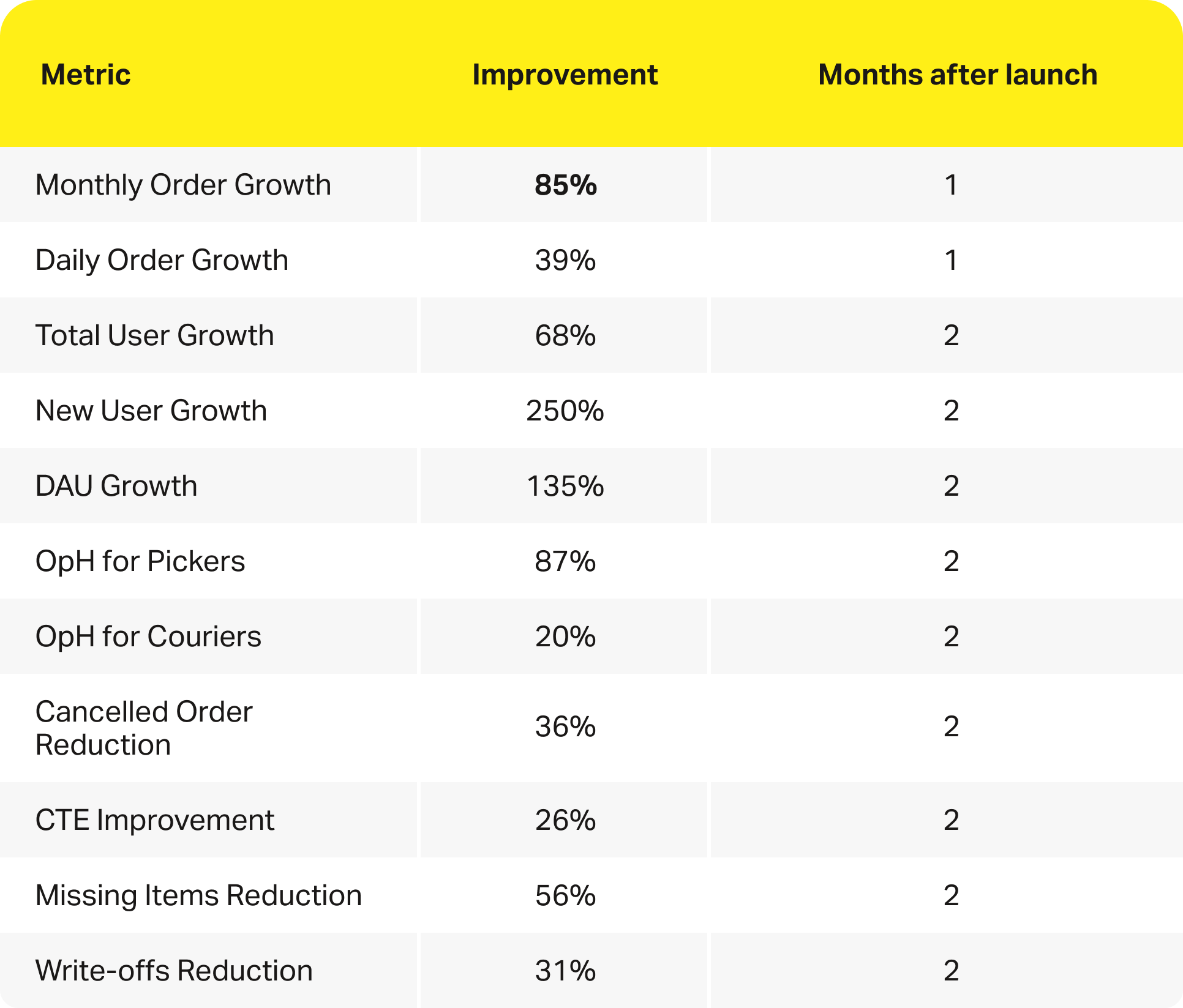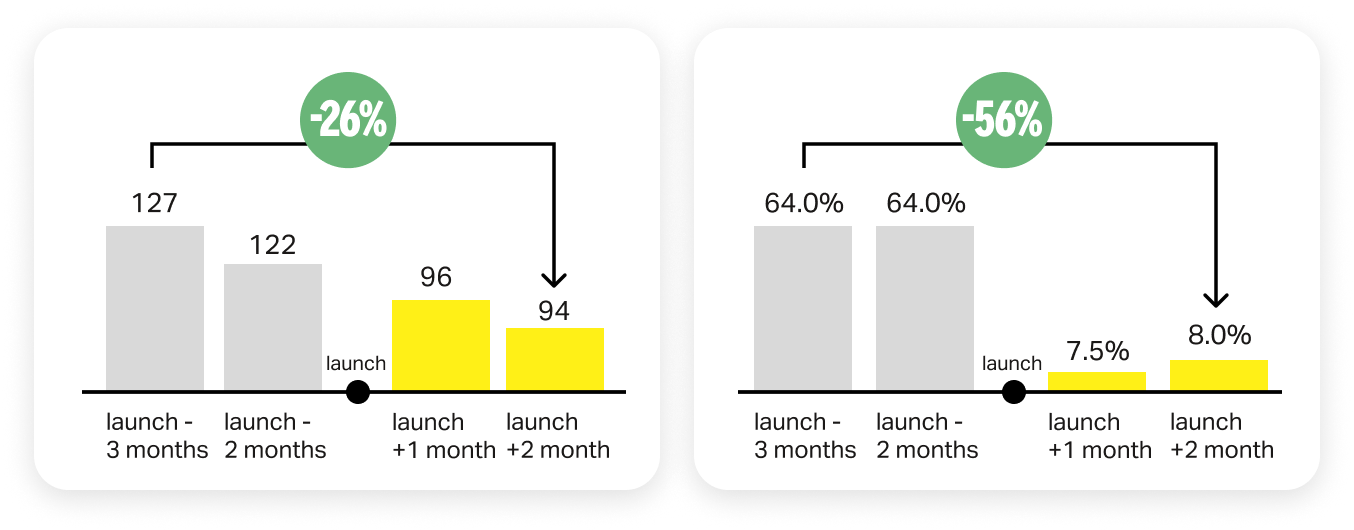Yango Tech and Surtifamiliar Partner for Next-Generation AI-Powered Grocery E-commerce in Colombia


In a customer-centric market, businesses must be equipped with efficient tools that enable them to process orders, track inventory, and ensure smooth delivery operations. One such tool is the Order Management System (OMS), which serves as the backbone of ecommerce and retail fulfillment processes. In this article, we’ll explore what an OMS is, its key features, benefits, and best practices for implementation.
An Order Management System (OMS) is software that helps businesses efficiently manage orders from multiple sales channels. Whether the order originates from a brick-and-mortar store, an ecommerce platform, or a mobile application, the OMS consolidates and processes them seamlessly.
Key features of an OMS include:
Real-Time Inventory Tracking: Visibility into stock levels across locations.
Order Routing: Automatically assigns orders to the appropriate fulfillment center.
Shipping Integration: Manages shipping logistics and tracks delivery progress.
Returns Management: Streamlines the return process for customers and internal operations.
An OMS centralizes all aspects of order management, ensuring efficient operations from start to finish.
An OMS is crucial for businesses seeking to deliver superior customer experiences. In a competitive ecommerce environment, consumers expect fast, accurate, and reliable service. An OMS helps to:
Minimize Errors: Automates processes that could otherwise result in human error.
Reduce Order Delays: Ensures efficient order processing and fulfillment.
Provide Transparency: Real-time order tracking keeps customers informed.
Scale Operations: Allows businesses to grow without increasing manual efforts.
By automating and optimizing order management, businesses can improve their operational efficiency, reduce costs, and ensure customer satisfaction.
The OMS functions as a bridge between sales channels, inventory systems, and fulfillment centers. When an order is placed, it follows this automated workflow:
Order Capturing: The order is placed through a sales channel (online, mobile app, etc.).
Inventory Verification: The system checks stock availability and reserves items.
Order Routing: The order is routed to the best fulfillment location based on proximity, inventory levels, and shipping speed.
Picking and Packing: The warehouse management system (WMS) guides the picker to retrieve the order, pack it, and prepare it for shipment.
Shipping and Delivery: The system manages the shipping process, integrates with courier services, and tracks the order in real-time.
Post-Delivery: Handles returns and refunds, ensuring a seamless customer experience.

OMS solutions can be tailored to fit the needs of different businesses, ranging from small enterprises to large multinational corporations. The two major types are:
Individual and Enterprise Systems
Individual Systems: Suitable for small businesses with fewer sales channels. These systems provide basic order processing, inventory management, and shipping integration.
Enterprise Systems: Built for large-scale operations, these systems offer advanced functionalities such as multi-location inventory tracking, automated fulfillment, and robust analytics.
Cloud-Based and On-Premises Solutions
Cloud-Based OMS: Hosted on external servers, accessible through the internet. These systems provide flexibility, real-time updates, and scalability, which makes them ideal for growing businesses.
On-Premises OMS: Installed locally on the company’s servers. These systems are customizable but require in-house IT teams for maintenance.
The order management process involves various stages, each requiring efficiency and precision:
Order Placement: The customer places an order via an ecommerce website, mobile app, or in-store system.
Inventory Allocation: The OMS checks product availability in real time and reserves stock.
Order Processing: The system generates the order details, assigns them to the relevant warehouse or fulfillment center, and prepares for picking.
Order Picking: Warehouse staff use picker apps to retrieve products from shelves.
Order Packing: The items are packed, labeled, and prepared for shipping.
Order Shipping: The system coordinates with shipping carriers, ensuring timely delivery.
Order Tracking: Customers and internal teams can track the order’s journey in real-time.
An OMS delivers several benefits that enhance operational efficiency and customer satisfaction:
Improved Inventory Accuracy: Real-time inventory updates ensure businesses never oversell or run out of stock.
Faster Order Fulfillment: Automating the picking, packing, and shipping processes shortens delivery times.
Enhanced Customer Experience: Customers receive real-time updates on their orders and faster deliveries, which increases satisfaction and loyalty.
Reduced Errors and Returns: The OMS minimizes human errors, ensuring accurate order fulfillment and reducing the need for returns.
Cost Efficiency: Automating labor-intensive tasks helps businesses reduce operational costs.

For online sellers, an OMS is crucial for managing orders from multiple sales channels and ensuring smooth operations. Key reasons why online sellers need an OMS include:
Scalability: As businesses grow, managing increasing orders and inventory manually becomes impossible. An OMS automates these processes, allowing for seamless scaling.
Customer Expectations: With customers demanding faster deliveries and accurate tracking, an OMS ensures that online sellers meet these expectations.
Efficient Fulfillment: An OMS integrates with warehousing and logistics systems, ensuring orders are picked, packed, and shipped without delays.
Selecting the right OMS depends on the size of your business, the complexity of your operations, and your long-term goals. Key considerations include:
Scalability: Ensure the system can grow with your business.
Integration: Choose an OMS that integrates with your ecommerce platform, CRM, and logistics systems.
Customization: Look for a system that offers customizable workflows and reporting.
Support: Evaluate the level of customer support and training provided by the OMS vendor.
An OMS comes with a wide range of features designed to streamline order processing, inventory management, and fulfillment:
Real-Time Inventory Management: Tracks stock levels across multiple locations.
Multi-Channel Support: Manages orders from ecommerce websites, mobile apps, and brick-and-mortar stores.
Automated Order Routing: Automatically assigns orders to the closest fulfillment center based on stock levels and customer location.
Returns Management: Simplifies the return process for both customers and internal teams.
Customizable Reporting: Offers detailed insights into sales, fulfillment, and inventory levels.
Leverage Real-Time Inventory Tracking:Maintain accurate stock levels by using real-time inventory updates to prevent overselling and avoid stockouts.
Automate Order Routing:Use automated rules to route orders to the best fulfillment centers based on location, inventory levels, and customer preferences.
Streamline the Picking Process:Implement a picker app integrated with the OMS to minimize errors and increase the speed of order retrieval.
Enable Transparent Tracking:Provide customers with real-time tracking updates from order confirmation to delivery for improved satisfaction.
Optimize Returns Management:Implement a clear, automated process for handling returns to minimize customer frustration and operational costs.
While both Order Management Systems (OMS) and Customer Relationship Management (CRM) systems play critical roles in business operations, they serve different purposes:
OMS: Focuses on managing the lifecycle of orders, from inventory to fulfillment. Its primary role is ensuring efficient order processing and delivery.
CRM: Centers on managing customer interactions and relationships. It helps businesses track customer history, preferences, and communications to improve marketing, sales, and service efforts.
In short, the OMS handles the logistics of orders, while the CRM manages customer relationships and engagement. Together, they provide a holistic approach to managing a business.



Yango Tech’s OMS integrates with the Warehouse Management System (WMS) to provide real-time visibility into every stage of the order process:
Order Capturing: Orders from the app or website are processed in real-time.
Inventory Management: The system tracks stock levels and assigns orders to pickers.
Order Fulfillment: Pickers retrieve and pack orders, while the OMS tracks delivery.
By using Yango Tech’s OMS, the client achieved an 85% increase in monthly orders and a 40% growth in GMV within two months.
Download case study here: Optimizing Operations For Relaunch
Whether integrated or standalone, an Order Management System (OMS) is an essential tool for any business looking to improve its order processing, inventory management, and fulfillment efficiency. By leveraging the right OMS, companies can ensure faster deliveries, improved customer experiences, and streamlined operations.